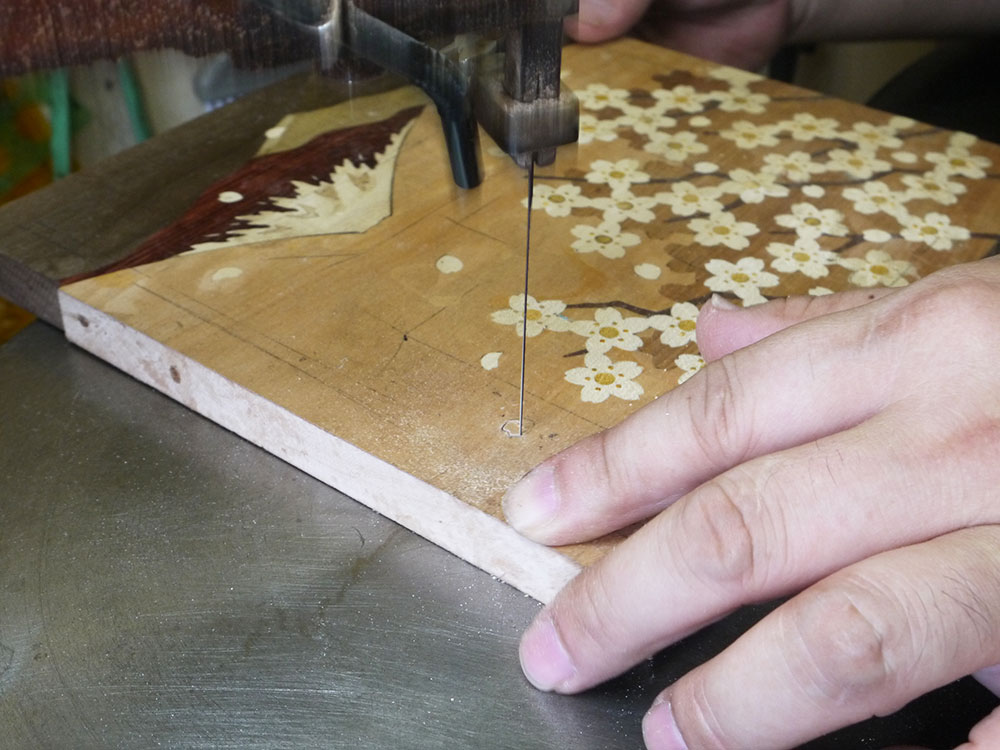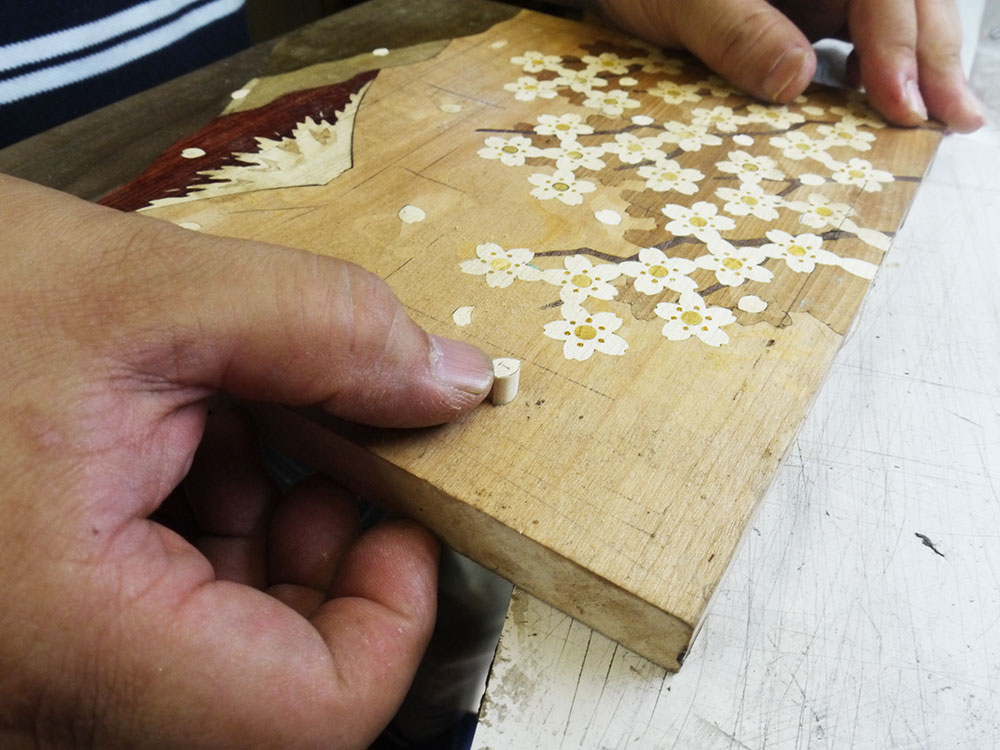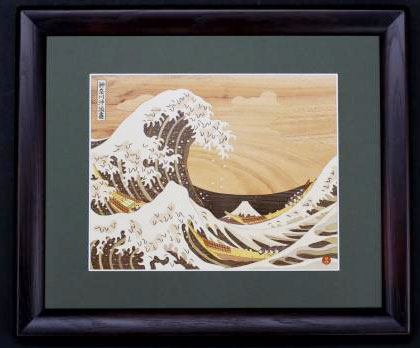


木象嵌
Mokuzougan
Mokuzogan(wood mural) is exquisitely created inlaid work, made by the careful selection and setting of patterned designs, contrived entirely from natural coloured woods. No inks or dyes have been utilized to create any of the colours used in any of the pieces of wood. Highly skilled craftsmen combine the natural colours and grains of wood to create harmonious pieces of work and art. One mural depending on its size and intricacy can take anywhere up to three months to complete.
These extraordinary techniques have been developed especially in the Hatajuku district, in the Hakone area, dating back as early as the Edo period(1600-1868). Presently such work can not be found outside the area.
1.INLAYING by CARVING(3-D Artwork)
This technique was first discovered at the shosoin temple in Nara, Japan. However, it is not practiced in the Hakone area.
Artists select and cut different kinds of wood, in order to painstakingly carve 3D designs using special chisels and knives. The process is handed down through the generations as a special talent to create works of all sizes and shapes.
This method is also found in various forms throughout Southeast Asia, with many works adorning homes and temples.
2.INLAYING by PILING
The second method can commonly be found throughout the entire HOKONE region. Various sizes of different natural coloured woods are placed in a particular order on a board, creating a design using the various colours effectively. After cutting them with a coping saw, pieces of wood are then combined with others, in order to create beautiful patterns foe the goods.
3.INLAYING by COTTING & PULLING OUT
Varied pieces of wood are deliberately selected or their colour and texture and planed until a smooth surface. With a design in mind, the craftsmen carefully cut the design out of the timber,using a coping saw and remove the piece, as if a jigsaw puzzle. The pieces are then outlined onto other coloured timbers and also cut out. After the process is continually repeated the design eventually comes together like a jigsaw puzzle. The process must be repeated many time over, depending on the intricacy of the design.
Having completely pieced together and made the base of the picture or design, slice are finely shaved off the block to create the artwork for picture or boxes. This requires a great deal of concentration and skill. The thin wooden design is known as "zuku".
SOME OF THE COLOURED WOODS USED:
WHITES: GreenCalabash, Spindle Tree, Sandalwood, Mizuki
YELLOWS: Lacquer Tree, Sumac, Nigaki
LIGHT BROWNS: Japanese Pagoda Tree, Mulberry Trees, Cherry Trees, Camphor, Keyaki-Zelkova
BROWNS: Walnut, Keyaki Jindai(a kind of Zelkova)
GREY: Honoki
BLACKS: Japanese Judas Tree, Kurogaki
Nowadays these intricate techniques of piling and pulling out cannot be found anywhere else in japan. This extensive form of traditional handcraft can only be seen in the Odawara district and Hakone area. Our society within Hatajuku is wholly dedicated to the further improvement in quality and design of our wooden handcrafts.
In Mokuzouogan, a pattern is cut out of a base board with a sewing machine saw, and parts of the same pattern in rich colors are inserted to create a single painting.
It is then cut thin with a wide canner. If the fit is too tight or too loose, the wood will peel off from each other when it is sliced, which requires a very high level of skill.
The most popular wood inlay products are frames. Fuji and the seven gods of good fortune are especially popular, and are recommended as gifts for celebrations as good luck charms.
Please visit the official website.


